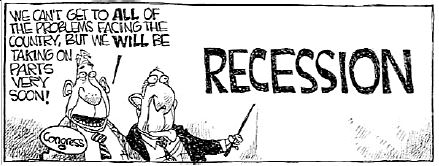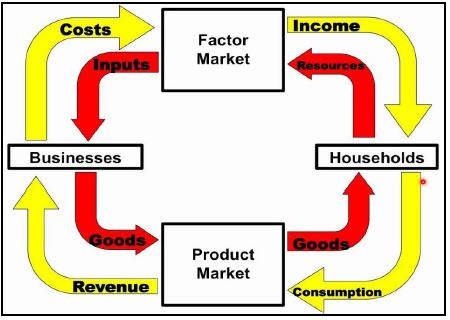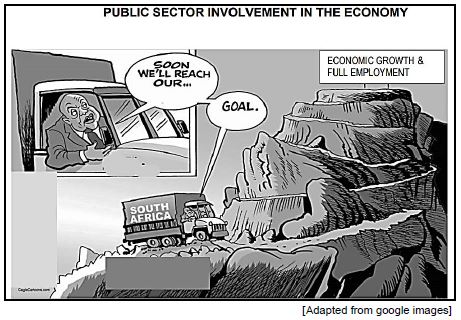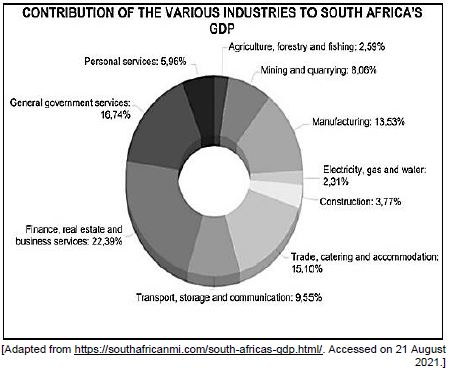ECONOMICS PAPER 1 GRADE 12 QUESTIONS - NSC PAST PAPERS AND MEMOS JUNE 2022
Share via Whatsapp Join our WhatsApp Group Join our Telegram GroupINSTRUCTIONS AND INFORMATION
- Answer FOUR questions as follows in the ANSWER BOOK:
SECTION A: COMPULSORY
SECTION B: Answer any TWO of the three questions
SECTION C: Answer ONE of the two questions. - Answer only the required number of questions. Answers in excess of the required number will NOT be marked.
- Number the answers correctly according to the numbering system used in this question paper.
- Write the question number above each answer.
- Read the questions carefully.
- Start EACH question on a NEW page.
- Leave 2–3 lines between subsections of questions.
- Answer the questions in full sentences and ensure that the format, content and context of your responses comply with the cognitive requirements of the questions.
- Use only black or blue ink.
- You may use a non-programmable pocket calculator.
- Write neatly and legibly.
SECTION A (COMPULSORY) 30 MARKS – 20 MINUTESQUESTION 1
1.1 Various options are provided as possible answers to the following questions. Choose the answer and write only the letter (A–D) next to the question numbers (1.1.1 to 1.1.8) in the ANSWER BOOK, for example 1.1.9 D.
1.1.1 Comparative cost advantage shows that the world output can increase if countries … in what they do best.
- impose tariffs
- limit the use of technology
- specialise
- protect workers
1.1.2 Aggregate supply can be stimulated through a government policy of …
- lowering the productivity of the factors of production.
- reducing production factors.
- limiting the efficiency of inputs.
- improving the efficiency of markets.
1.1.3 The South African National Defence Force services is provided by the … government.
- central
- district
- local
- provincial
1.1.4 When the value of intermediate products is irregularly added to final products … occurs.
- accounting record
- double counting
- national income
- national accounts
1.1.5 An addition to the country’s stock of capital or capital goods is called …
- gross domestic product.
- invention.
- gross capital formation.
- innovation.
1.1.6 An indication of long-term growth in the economy is referred to as a(n) …
- trendline.
- amplitude.
- extrapolation.
- trough.
1.1.7 A tax is proportional when …
- a general tax is levied in each unit of the product.
- the average tax rate is the same for all taxpayers.
- people with higher income pay a larger percentage of their income in tax than people with lower incomes.
- it takes a larger percentage of the income of low-income earners than those with higher income.
1.1.8 A decrease in the value of the currency due to market forces is known as …
- revaluation.
- devaluation.
- appreciation.
- depreciation. (8 x 2)
(16)
1.2 Choose a description from COLUMN B that matches an item in COLUMN A. Write only the letter (A–I) next to the question numbers (1.2.1 to 1.2.8) in the ANSWER BOOK for example 1.2.9 J.
| COLUMN A | COLUMN B |
| 1.2.1 Real figures 1.2.2 Cash reserve requirement 1.2.3 Subsidies 1.2.4 Social grants 1.2.5 Pareto efficiency 1.2.6 Real flow 1.2.7 Trade balance 1.2.8 Special Drawing Right |
|
(8 x 1) (8)
1.3 Give ONE term for each of the following descriptions. Write only the term next to the question numbers (1.3.1 to 1.3.6) in the ANSWER BOOK.
Abbreviations, acronyms and examples will NOT be accepted.
1.3.1 A sector that includes wholesale, transport, real estate and communication
1.3.2 Consumption that is independent of the level and changes of income
1.3.3 Cycles that are caused by changes in activity in the building and construction industry
1.3.4 A curve that explains the relationship between tax rates and tax revenue
1.3.5 A summary of the value of different leading indicators into a single value
1.3.6 The exchange of goods or services across international borders
(6 x 1) (6)
TOTAL SECTION A: 30
SECTION B
Answer any TWO of the three questions in this section in the ANSWER BOOK.
QUESTION 2: MACROECONOMICS 40 MARKS – 30 MINUTES
2.1 Answer the following questions.
2.1.1 Name TWO kinds of securities found in the money market. (2 x 1) (2)
2.1.2 Why does the government give transfer payments to communities? (1 x 2) (2)
2.2 Study the extract below and answer the questions that follow.
KEYNESIAN ECONOMICS The concept of the multiplier process became important in the 1930s when John Maynard Keynes suggested it as a tool to help governments in decision-making. This demand-management approach was designed to help growth and to measure the amount needed to reach high levels of national income. [Adapted from www.tutor2u.net. Accessed on 10 November 2021.] |
2.2.1 Identify an example of an injection above. (1)
2.2.2 Name a factor that influences the size of the multiplier. (1)
2.2.3 Briefly describe the term multiplier. (2)
2.2.4 Explain the use of the multiplier by the government. (2)
2.2.5 What is the negative effect of a low savings rate on economic growth? (4)
2.3 Study the information below and answer the questions that follow.
South Africa, the continent’s most industrialised economy, was already in a technical recession when the coronavirus pandemic hit in March 2020. There were job losses, a credit crunch, increase in food and fuel prices and consumer confidence in the economy started to decline. |
2.3.1 Identify the socio-economic challenge that increased when the economy went into a slump. (1)
2.3.2 Name the lower turning point of a business cycle. (1)
2.3.3 Briefly describe the term economic recession. (2)
2.3.4 Explain the relationship between GDP and business cycles. (2)
2.3.5 Why does inflation tend to fall during recessions? (4)
2.4 Differentiate between the expenditure method and the income method to determine Gross Domestic Product (GDP). (8)
2.5 How can the monetary policy contribute to economic growth? (8)
[40]
QUESTION 3: MACROECONOMICS 40 MARKS – 30 MINUTES
3.1 Answer the following questions.
3.1.1 Name TWO flows in an open circular flow economy. (2 x 1) (2)
3.1.2 Why is it not possible to exclude individuals from using public goods? (2)
3.2 Study the information below and answer the questions that follow.
[Source: http://www.amazon.com]
3.2.1 Identify the participant that owns the factors of production. (1)
3.2.2 Name ONE public good provided by the state. (1)
3.2.3 Briefly describe the term factor market. (2)
3.2.4 What is the effect on national income if injections are less than withdrawals? (2)
3.2.5 Explain the impact of a decrease in taxes on the level of production. (4)
3.3 Study the information below and answer the questions that follow.
[Adapted from google images]
3.3.1 Identify a macroeconomic objective of the public sector in the cartoon. (1)
3.3.2 Which fiscal policy instrument is the main source of government income? (1)
3.3.3 Briefly describe the term economic growth. (2)
3.3.4 Explain how the public sector failure can lead to social instability. (2)
3.3.5 Why is South Africa likely to fail in achieving its economic goals? (4)
3.4 Briefly discuss the role of firms in the circular flow. (8)
3.5 Evaluate the impact of reducing the repurchase rate (repo rate) on the economy. (8)
[40]
QUESTION 4: MACROECONOMICS AND ECONOMIC PURSUITS
40 MARKS – 30 MINUTES
4.1 Answer the following questions.
4.1.1 Name TWO types of markets that form part of the financial system. (2)
4.1.2 Why is it important to use moving averages to forecast business cycles? (2)
4.2 Study the table below and answer the questions that follow.
| NATIONAL ACCOUNT AGGREGATES SOUTH AFRICA GROSS DOMESTIC PRODUCT | |
| R millions | |
| Primary sector | 324 365 |
| Secondary sector | 556 708 |
| Tertiary sector | 1 789 431 |
| Gross value added at basic prices | A |
| Gross domestic product at market prices | 2 964 261 |
[Source: SARB Quarterly Bulletin]
4.2.1 Give an example of taxes on products. (1)
4.2.2 Name the alternative term used for gross value added in national accounts. (1)
4.2.3 Briefly describe the term secondary sector. (2)
4.2.4 How are basic prices converted to market prices? (2)
4.2.5 Calculate the value of A. Show ALL calculations. (4)
4.3 Study the information below and answer the questions that follow.
[Adapted from https://southafricanmi.com/south-africas-qdp.html/. Accessed on 21 August 2021.]
4.3.1 Identify the industry in the secondary sector which contributed the most towards economic growth in the diagram above. (1)
4.3.2 Give ONE example of an industry in the primary sector. (1)
4.3.3 Briefly describe the term Gross Domestic Product. (2)
4.3.4 How does compensation of employees affect labour productivity? (2)
4.3.5 Why is the multiplier effect on manufacturing important in the economy? (4)
4.4 Draw a correctly labelled diagram of a business cycle, clearly indicating trend line, length, the amplitude and the trough. (8)
4.5 With reference to the Phillips curve, analyse the relationship between inflation and unemployment. (8)
[40]
TOTAL SECTION B: 80
SECTION C
Answer any ONE question of the TWO questions in the ANSWER BOOK.
Your answer will be assessed as follows:
| STRUCTURE OF ESSAY | MARK ALLOCATION |
| Introduction The introduction is a lower-order response.
| Max. 2 |
| Body Main part: Discuss in detail/In-depth discussion/Examine/Critically discuss/Analyse/Compare/ Evaluate/Distinguish/Differentiate/ Explain/Draw a graph and explain/Use the graph given and explain/ Complete the given graph/Assess/Debate A maximum of 8 marks may be allocated for headings/examples. Additional part: Critically discuss/Evaluate/Critically evaluate/ Debate/Deduce/Compare/Distinguish/Interpret/How?/Suggest A maximum of 2 marks may be allocated for mere listing of facts. | Max. 26 Max. 10 |
Conclusion
| Max. 2 |
| TOTAL | 40 |
QUESTION 5: MACROECONOMICS 40 MARKS – 40 MINUTES
- Discuss in detail the reasons for international trade. (26 marks)
- How can a weaker rand impact on South Africa’s trade with other countries? (10 marks)
[40]
QUESTION 6: ECONOMIC PURSUITS 40 MARKS – 40 MINUTES
- Discuss in detail the main objectives of the public sector in the economy.
(26 marks) - How effective is the South African government in achieving full employment? (10 marks)
[40]
TOTAL SECTION C: 40
GRAND TOTAL: 150



